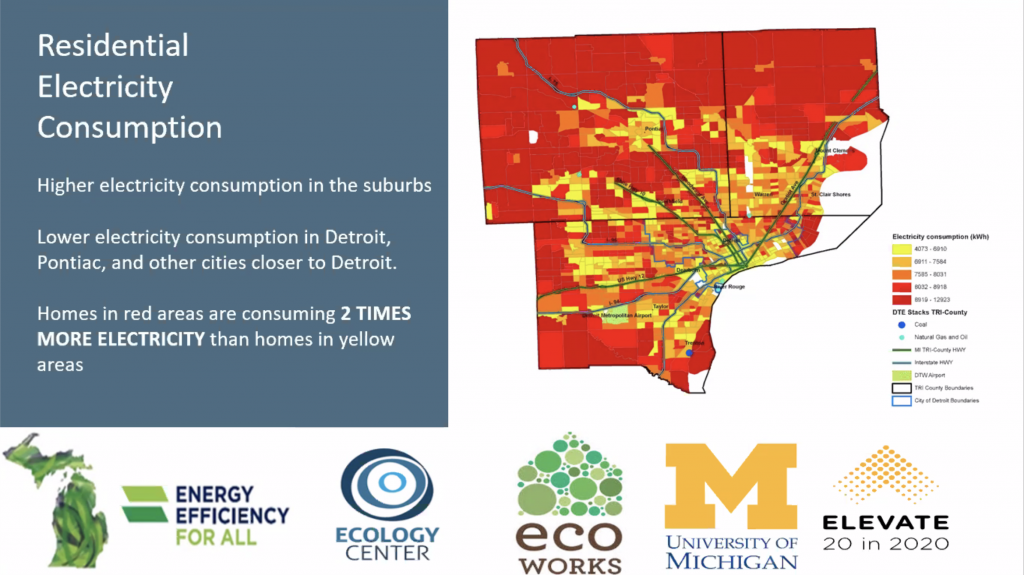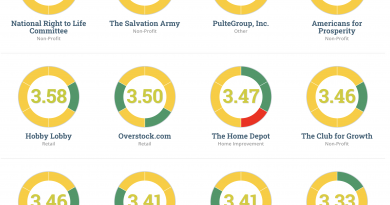MPSC December Meeting: Neighborhood-Level Equity and Energy
The latest MPSC Low-Income workgroup meeting wrapped up today after a focus specifically on equity strategies. Grounded in some historical background as well as a present-day analysis of energy disparities, we heard from Dr. Tony G. Reames of the University of Michigan (SEAS) and Elevate Energy’s Briana Parker. (I promise this article will be shorter. But, if you want the full thing covering a bit more history, check out the full write-up from the November meeting.).
Settlers of Suburbia
Aaron Landsman introduced the meeting with a video that produced a lighthearted, comedic, though illustrative, portrayal of white suburbanites learning that their neighborhoods were founded in institutional racism. It tackled the history of redlining, the genesis of suburban sprawl, and pointed to the need for awareness about what effectively remains a system of segregation (Further reading: The Color of Law). The video, which features some stiff, elegant suburbanites playing a boardgame– Settlers of Suburbia (a reference, of course, to Catan)- was, I thought, a bit evocative of P. Diddy’s “Bad Boy For Life” (2001), in which Diddy and friends disrupt the whiteness of an idyllic suburban neighborhood (populated by Ben Stiller, among others) by well, being black. (They don’t make hip-hop like they used to).
Facing A Crisis of COVID, Evictions, and Utility Shutoffs
White Energy, Black Energy, and Confounding Variables
Parker (Elevate Energy) presented on the energy topic through a historical lens of the Great Migration, while Reames (University of Michigan) presented on the comparison between residential energy efficiency and energy usage. Unsurprisingly, the two are strongly correlated along racial divisions in Metro Detroit (see below). The first map (left) compares energy usage per square foot (a.k.a. EUI) across the tri-county metro area. Energy usage intensity is highest in the city, but energy usage overall is higher in the suburbs (bigger houses, more spending in general = more energy consumption). The second map (right) shows that energy consumption is far higher in the suburbs, but this is by virtue of the fact that wealth is tied directly to consumption rates. Correlate that along racial lines, and you’ve got the fact that white people are more likely to use more energy, but they’re also likely to live in more energy-efficient housing.
The redlining connection is a vital one because it establishes a historical precedent that continued entrenched racial divisions for a full century after the end of slavery. Remember that one the next time someone says, but slavery ended in 1865, why do we still have racial disparities in wealth and human development?! Now, add another layer of complexity in the fact that high-density is great for efficiency, but most newer-renovated mid-density and higher density buildings are going to be exorbitant, luxury housing.
Creating Approachable, Affordable Solutions
Complicating the city-suburbs inversion again is the fact that “[e]nergy efficiency expenditures are highest in white households,” as Tony Reames pointed out. This shouldn’t be terribly surprising, paired with the hard data that wealthier and whiter areas are using more energy by virtue of spending more money in general. “You look at the measures of energy-efficient appliances and things of that nature,” Reames went on, “we know this [spending is more prevalent in wealthier areas]. So, how do we reframe our programming, our targeting, our investment– to address these issues that we can see and that we have data on?”
Those data are clear. Sharonda Williams-Tack (the Sierra Club) said that we should be creating solutions that are specifically targeted to addressing needs based on those data. This was echoed by Elevate’s Briana Parker. “Irrespective of income, irrespective of location, black and hispanic households are putting a lot more of their income [into] energy costs,” she said. Less clear is an interesting question that I– and others- raised about the correlation between energy efficiency and age of properties. Older properties may be more heavily deteriorated, especially in disinvested neighborhoods, where the need is greatest.
However, as I mentioned before, efficiency (in terms of EUI) is pretty high in some of the highest-density buildings, many of which in the city are pretty old. We need more data about this question, but more pressing is something we have data on right now– that low-income families need to have access to energy-efficient housing, and their landlords need access to affordable capital to retrofit their buildings.

Conclusions
The question of how to address the issue is less about assembling the data. We have the data, as evidenced in Dr. Reames’ maps. Justin Schott, of Detroit-based EcoWorks, also shared a map that similarly visualized the connection between water insecurity and housing insecurity. Rather, the question is how to formulate meaningful policy that will be affordable to implement and scalable.
Mary Templeton, of Michigan Saves, added an aside in the chat on this question. The Michigan Saves program, which bills itself as the nation’s first “green bank,” has been a smash hit in recent years. “Alternative underwriting methodologies like [on-bill financing] and on-time bill payment history allows greater access,” she wrote, in cases where private lenders are relying heavily on things like credit scores and debt-to-income ratios. “We are also working with DTE to offer a grant/loan program that’s intended to make recipients cash-flow positive where the utility savings pay for the loan.”
Sound familiar? Remember Roger Colton’s presentation last time? The utility can actually create a better cash flow model from low-income ratepayers by directly subsidizing them. Of course, this is a tough sell as a matter of investment for a company that, ahem, can’t even be bothered to pay taxes. Still, it’s doable– just requires the right partnerships. Capital comes from many places and comes in many shapes and colors and price points. I have another piece coming on this in the next few days. There’s a direct tie-in for how low-income energy efficiency programs can be implemented at scale at a municipal level, so stay tuned. See you next time!
Follow the Michigan Public Service Commission. Support Handbuilt’s work in advocacy and policy solutions by becoming a contributor today!






